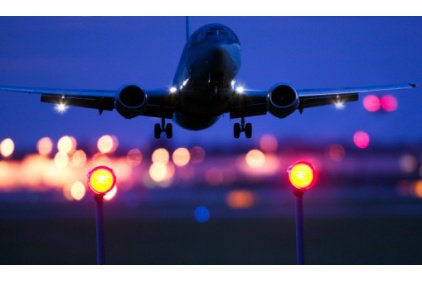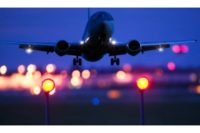FAA loosens up on PEDs

 The Federal Aviation Administration (FAA) has given airlines the ability to expand the use of personal electronic devices for passengers on board. That means you could soon be able to listen to your music or read books on an e-reader from gate-to-gate on your flight.
The Federal Aviation Administration (FAA) has given airlines the ability to expand the use of personal electronic devices for passengers on board. That means you could soon be able to listen to your music or read books on an e-reader from gate-to-gate on your flight.
Individual airlines will have the ability to determine when it is safe for passengers to use their electronic devices.
Portable Electronics Frequently Asked Questions
Can I use my e-book reader/tablet/cell phone throughout my flight now?
Once your airline has shown the FAA its airplanes can safely handle radio interference from portable electronics, they can let you use your devices in airplane mode only most of the time. At certain times — for example, a landing in reduced visibility — the Captain may tell passengers to turn off their devices to make absolutely sure they don't interfere with onboard communications and navigation equipment.
I heard that the FAA has determined airlines can safely expand passenger use of portable electronics. So why do I have to wait?
The key word is "safely." The FAA has given the airlines directions on how to safely expand use of PEDs. The process will vary among airlines, but we estimate passengers will be able to safely use electronic devices gate-to-gate within several months.
Do the new rules apply to both domestic and international flights on U.S. airlines?
Yes. U.S. airlines may expand the use of electronic devices on domestic and international flights.
If someone gets caught using a PED before an airline changes its policy, can the FAA fine that passenger?
A safe flight should be everyone's priority. If a crew member says devices must be turned off when the cabin door closes or before landing, it means the airline hasn't yet shown its airplanes can actually handle PED use safely. You must always follow crew instructions; failure to do so may result in a fine.
Will flight attendants now have to police passengers using PEDs?
The PED rulemaking committee recommended — and the FAA agrees — that flight attendants cannot know when a device is ON and in airplane mode or not. We expect flight attendants to inform passengers about when it is safe to use PEDs and when they must turn them off for landing in some cases of poor visibility,.
Some groups say passengers will not turn off their PED when asked. What danger does that pose?
We depend on passengers to follow crew member instructions to turn off electronic devices when they ask you to. We estimate only one percent of all flights will have low visibility landings where you'll have to turn off your PEDs because they may interfere with some of the equipment in the cockpit. We know that most passengers have been turning off their devices for the many years and we ask that all passengers put safety first.
What should I do if the crew says to turn off electronics and the person next to me doesn't do it?
You could politely remind the person of the crew's announcement, but above all, avoid a confrontation.
What do foreign airlines do? Can they allow it in U.S. airspace now?
Foreign airlines follow the PED regulations of their country's civil aviation authority. However, the FAA shares information and works with the international civil aviation authorities to harmonize requirements as much as possible.
How do you know it will be safe for passengers to use PEDs on all phases of flight?
The group that analyzed potential risks for expanded PED use included experts from the airlines, aviation manufacturers, passenger groups, pilots associations, flight attendants, and mobile technology advocates/manufacturers. Their analysis will help airlines understand the risks so they can put procedures in place to keep those risks at an acceptable level.
Do you have data that shows the number of times PEDs have caused interference in the cockpit?
There are reports of suspected interference to communication and navigations systems in both the NASA Aviation Safety Reporting System and the FAA's Service Difficulty Reporting system. The FAA believes the rulemaking committee report and associated FAA guidance can minimize possible interference.
The FAA has let pilots use PEDs for some time. Why not passengers?
Many airlines use tablets as Electronic Flight Bags containing information such as maintenance documents, company and aircraft manuals and approach charts. Before the FAA allows an airline to do this, the device must go through a rigorous evaluation period — typically six months — to make sure they are reliable and will not cause interference with the airplane's electronic systems. Pilots are not permitted to use personal wireless communications devices or laptop computers for personal reasons at any time during aircraft operations.
Why do I have to stow a laptop and not a tablet?
If there's an emergency, larger and heavier items such as standard laptops could impede evacuation of the airplane. This is the same reason tray tables must be stowed and seat backs must be upright.
How will this change the airline's carry-on bag policies?
Each airline will review its carry-on baggage policy to determine how the expanded use of PEDs impacts its current program. For example, if the operator's current program requires all PEDs to be stowed for take-off and landing, and the operator expands use to those phases, the operator would have to change that program to allow acceptable PEDs to remain out and secured.
What kind of risk assessment did the FAA do?
The FAA's safety risk assessment will help an airline review the electronic systems on its airplanes to determine if expanded use of PEDs is acceptable for their specific airplanes and operations. It looks at the technical risks associated with system problems caused by PEDs. Airlines should use the assessment as a tool in conjunction with other operational considerations such as PED stowage and crew and passenger education.
Looking for a reprint of this article?
From high-res PDFs to custom plaques, order your copy today!





